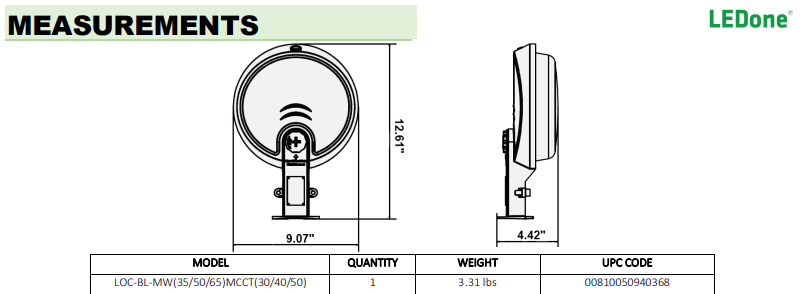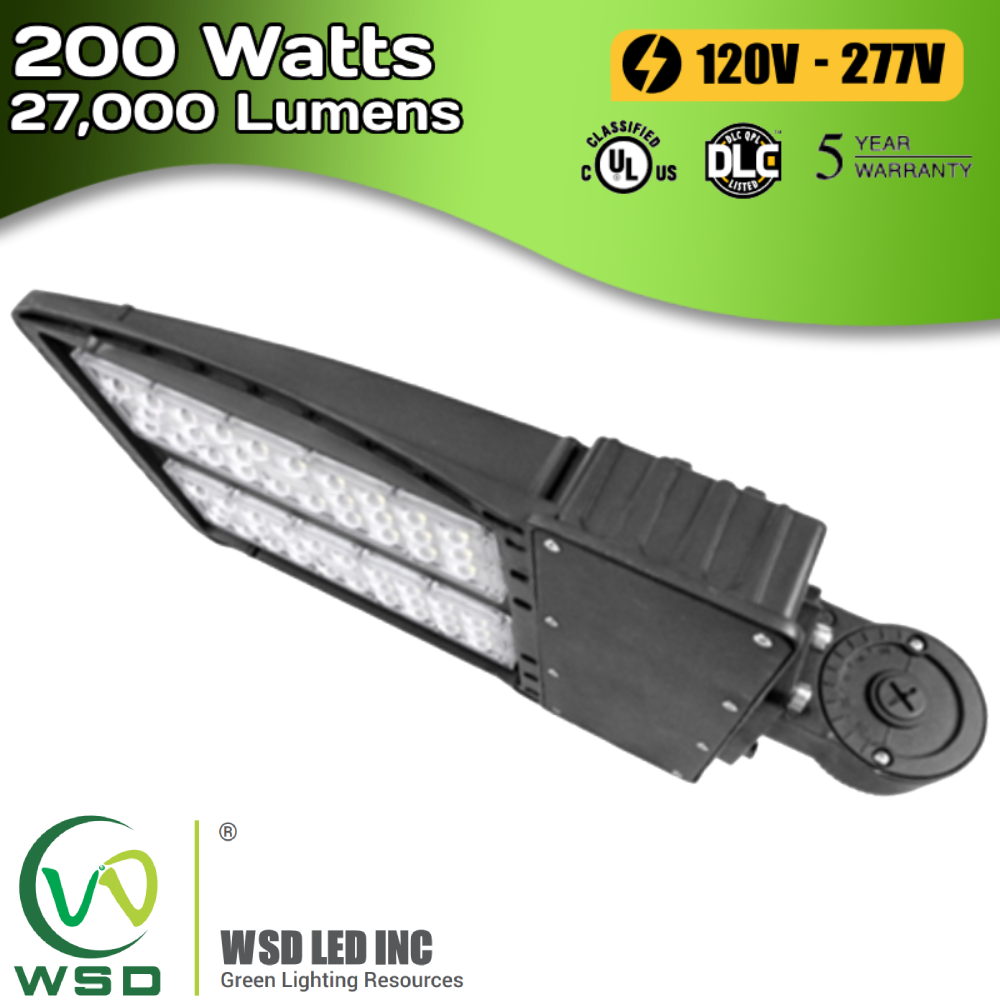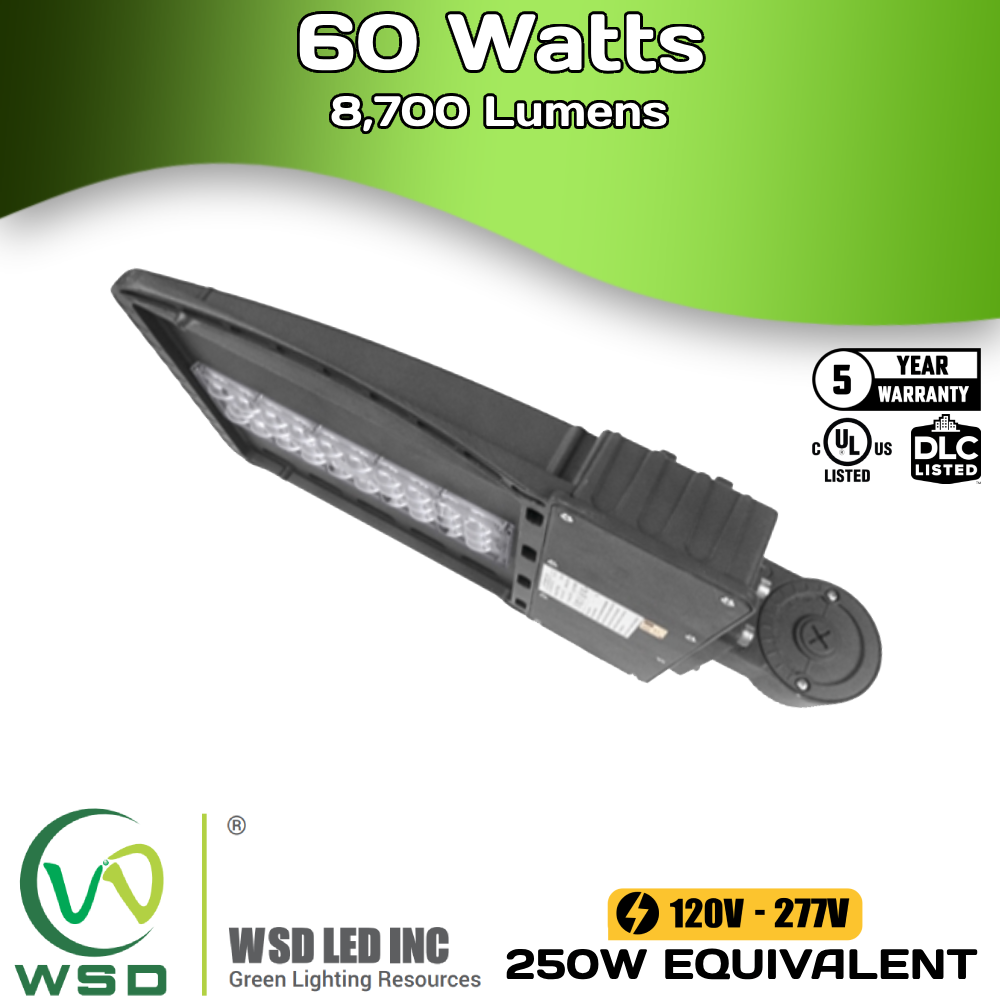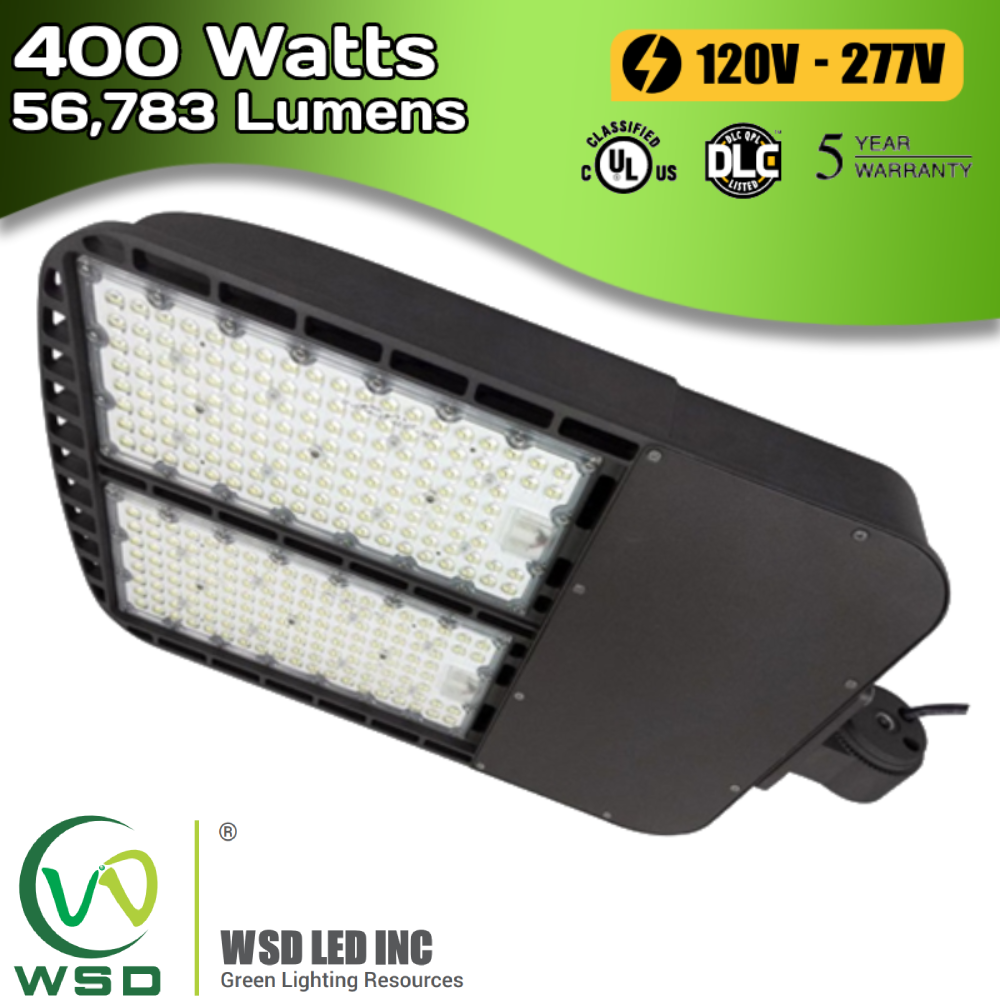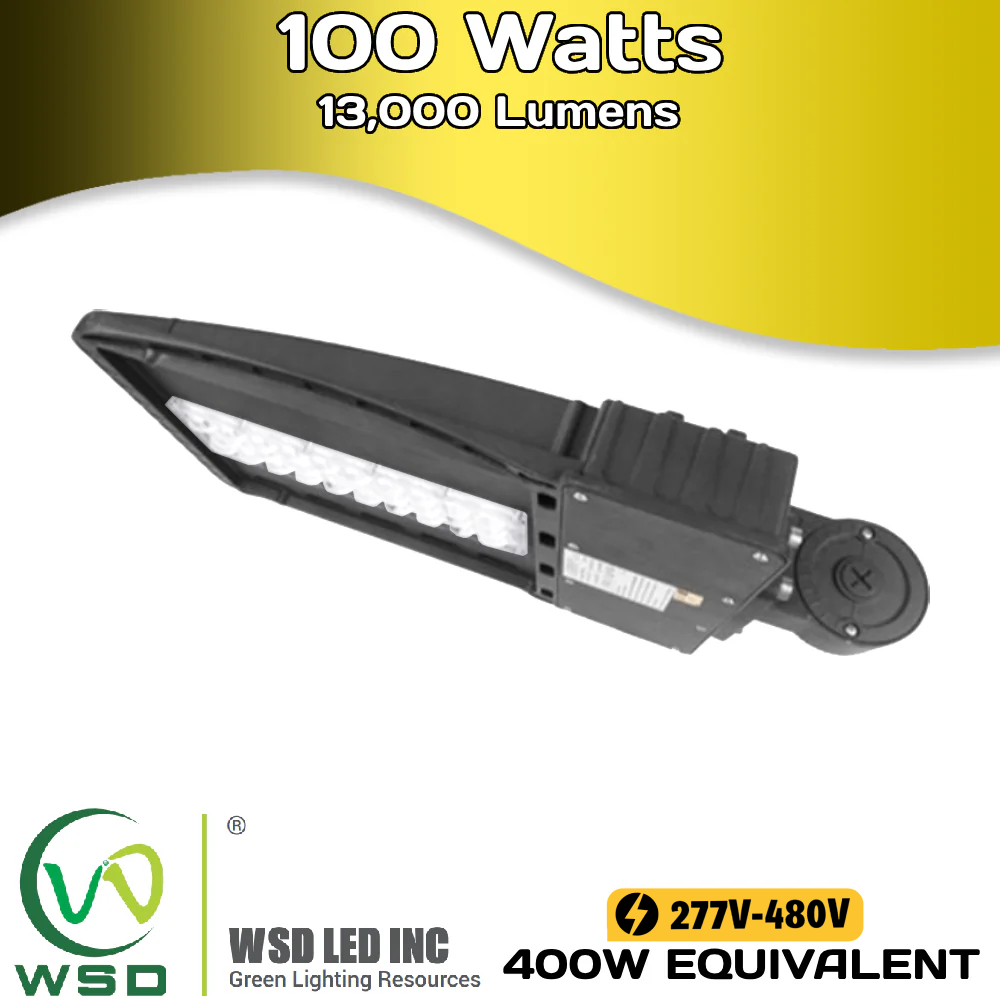Benefits of LED Parking Lot Lights
LED area lighting virtually eliminates ongoing maintenance with some fixtures, staying bright for up to 100,000 hours. Even running 12 hours a day, that's over 22 years of light for college campuses, shopping malls, residential parks, hospital grounds, commercial parking lots, car dealerships, and other applications. While HID systems fade quickly and turn yellow over time, LED area lights maintain their color temperature for years, giving you longer lasting and higher quality light.
What You Need to Know When Replacing an HID Area Light
Because metal halide bulbs are omni-directional, the bulb gives off light you never end up seeing because it is trapped bouncing around the inside of the area light fixture. On the packaging, this light lost to "Lumen bounce" is still included in the initial Lumen rating. Because LEDs are naturally directional, there's no light trapped in the fixture. This means an LED pole light fixture can be a direct replacement for older systems even if on paper it doesn't look as though the LED area lights put out as much light. In order to help you find the closest actual Lumen replacement, we've listed the wattage range of similar metal halide fixtures under each Lumen range.
Turn Your Area Light Into A Parking Lot Light With Slipfitter Mounting Brackets
LED parking lot lights may come with either a mounting arm or a slipfitter mounting bracket. Slipfitter mounts, sold separately, give you more flexibility and control over installation and light distribution by offering a broader range of angles than a stationary arm. Other available mounting accessories for LED area lights include mounting arms, tenons, chain hangers, safety cables, yokes, brackets and bracket covers. You can also connect your LED area lights to timers or photocells for dusk to dawn illumination that saves you even more. If pairing LED commercial lighting with photo controls, make sure the photocell is compatible with LED products. Using a conventional system that is not LED compatible could lead to premature failure of the area lights or the photocell. The photo control may not even recognize the LED area light and fail to turn the lights on and off at all.




